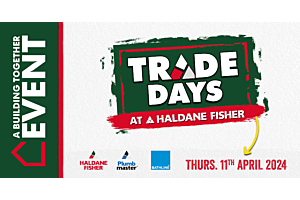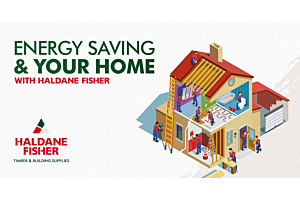A door closer is a mechanical device that is situated above, beneath, or concealed within a door assisting in its smooth closure. All door closers have an important role to play in fire safety, but also provide a host of other benefits whilst protecting doors from potential damage.
For example, a door closer can aid the ease with which a door is opened as well as closed using back-check or delayed closing options, ensuring doors are opened at the desired speed and force. They can also prevent doors banging shut, blowing open, or self- closing at speed onto a user.
Electronic door closers can close doors in the event of a fire or security lockdown, and also open doors automatically, typically beneficial within communal areas in apartment blocks, commercial settings, and care homes where users may be elderly, frail or physically impaired.
There are many designs, styles, and finishes available, offering a range of capabilities and types of application. Have a look at some of the key factors to consider when selecting the closer for your project:
- Ensure the closer holds the correct fire rating if required
- Consider the volume of traffic the door will receive
- Consider the location of the doorway
- Overall size and weight of the door
- Finishes and aesthetics may be important
- Commercial or domestic application
Volume and frequency of door traffic
The volume and frequency of traffic doors are likely to receive is one of the most important factors to consider. This will often be defined in terms of operating ‘cycles’ per year where one cycle represents the door being moved from the closed position, to open and back to closed again.
Usage is generally split into three different levels and each door closer will specify the level they are most suitable for – (low, medium or high frequency)
- Low frequency –10,000 cycles per year
- Medium frequency – 10,000 – 100,000 cycles per year
- High frequency – 100,000 – 500,000 cycles per year
Within a residential property, the usage is likely to be low. In comparison, schools, hospitals and commercial properties will experience high footfall therefore a high frequency closer would probably be more suited to this environment.
Strength of door closers
Door closers come in different ‘power’ sizes. The size you need will be dependent on the weight and width of the door that the closer controls.
The strength of door closer will normally fall into 6 different categories. The wider and heavier the door is, the greater the force or power size will be needed to take control of the door. You may also require a stronger power size to overcome air pressure, if it is being used in a small room with limited natural air supply.
Power size 1 being the weakest, whilst power size 6 the strongest. Normally a recommendation that a minimum of power size 3 is fitted.
When looking at door closers’ specifications you may find that the power size is fixed, or that the controls are adjustable to cater for different doors. This is particularly helpful when the size of door or closer required is uncertain.
Installation applications
There are three core ways that a door closer may be fitted – surface mounted, concealed in the top rail, or fitted to the floor.
Surface mounted
- T-slide arm
- Regular arm surface mounted
- Parallel arm surface mounted
- Top jamb mounted
Overhead concealed door closers
Concealed door closers, in contrast, are largely hidden from view. They fit neatly inside the top rail of the door. This type of closer would normally be specified to help achieve a minimalistic look with most of the main components hidden from view.
Floor Springs
Floor springs, as the name would suggest, are installed in the floor beneath the door. They are a highly durable option and a good choice for heavy doors, or areas with very high levels of traffic (hospitals, schools or commercial applications).
Key terms explained;
When looking at the specification of a door closer, there are some key terms you are likely to come across. See below a brief description of each:
Backcheck
Backcheck is a restrictive force preventing a door from being thrown wide open at speed, such as by a gust of wind. This feature can help prevent damage being caused to the door, frame handles, or surrounding structure.
Delayed action/closing
A door closer can provide a delayed action/closing mechanism, meaning the door will remain open for a period of time before closing. Some closers will offer an adjustable time for this.
Closing speed
A door closer can be used to control how quickly a door closes. You may choose to go for a longer ‘closing speed’ to give occupants more time to pass through safely, if they are elderly or frail, are less able, or in the case of young children.
Latching speed
When a door closer offers an adjustable latching speed that enables you to adjust the speed of the last few degrees of closing, separately to the main closing speed. This can be effective in preventing the door from banging.
Safety and reliability
Door closers are an important element in the control of fire and smoke. BS EN 1154:1996 is the European standard for controlled door closing devices and as such tests mechanical door closer performance. Adopted by EU member states 2004, it became a mandatory requirement for all closers to carry a CE marking. It prescribes the test methodology and classification of randomly selected production line products.
There are specific requirements for door closers that are used on fire doors. They should not include a hold-open device, unless you are using an electrically powered closer, which will automatically be turned off when the building’s fire alarm system is activated.
There are many important symbols to watch out for to help select a product that meets or exceeds the necessary specification and fire certification. Ensure you research the symbols correctly if you have any concerns.
For more advice and information
Please contact a member of our experienced sales team on 028 90315508





